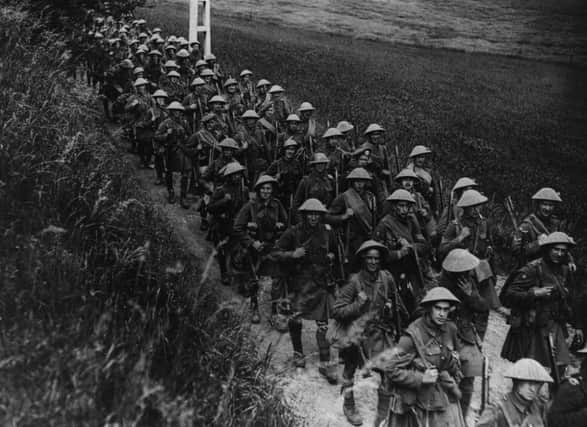Note sewn inside soldier’s kilt promised romance


Economic historian Dr Helen Paul, of the University of Southampton, found the hand-written message while removing packing stitches from the kilt, which has been passed down in her family over decades.
The message reads: “I hope your kilt will fit you well, & in it you will look a swell. If married never mind. If single drop a line. Wish you bags of luck, & a speedy return back to Blighty.”
Advertisement
Hide AdAdvertisement
Hide AdUnderneath is the name of Helen Govan, of 49 Ardgowan Street in Glasgow.
The London Scottish Regiment kilt, made by Peter Wilson of Bridge Street in Glasgow, would have been made for use by a soldier sent to fight in the war but, for reasons unknown, it was never unpacked or worn.
Dr Paul believes the kilt may have belonged to a distant cousin of her father but isn’t sure how it ended up in her family.
She is hoping to find the descendants of the seamstress to uncover the story behind the note. She said: “This garment has been in our family for a number of decades, and until recently, we were completely unaware there was such an intriguing secret hidden in its folds.
“I was looking at it as part of a project to mark the anniversary of the First World War and realised it had never been worn because it still had the packing stitches attached, which the soldiers would have had to cut before wearing the kilt. I was examining them and got a real surprise when the note fell out.
“I think the lady who put it there may have adopted a scatter-gun approach and could have placed a lot of these notes in the soldiers’ kilts.”
She added: “My father tried to trace any relatives of the note’s author a few years ago, but his efforts failed and I’m hoping to pick up where he left off.
“There are many unanswered questions. We don’t know how many of these poems this lady sent. Was this a one-off, or were there many more lost to the battlefield, or even still existing undiscovered?
Advertisement
Hide AdAdvertisement
Hide Ad“If there were more, did anyone ever answer her message and, indeed, did she ever meet and marry a soldier returning from the war?”
Professor Maria Hayward, also from the University of Southampton, who specialises in the history of clothing, said: “The condition of the kilt is very striking – you do not expect to see a piece that has such clear links to the First World War being in such good condition.
“The construction, which is very simple, in combination with the efficient use of fabric and the way one size could be made to fit most men, made kilts of this type a very versatile piece of military uniform, which also retained its distinctive national identity.”
The London Scottish Regiment’s tartan is Elcho tartan of Hodden Grey, which is a combination of maroon, brown and pink.
The London Scots were the first territorial army unit into action in the First World War, at Messines Ridge on 31 October, 1914, during the battle of Ypres.